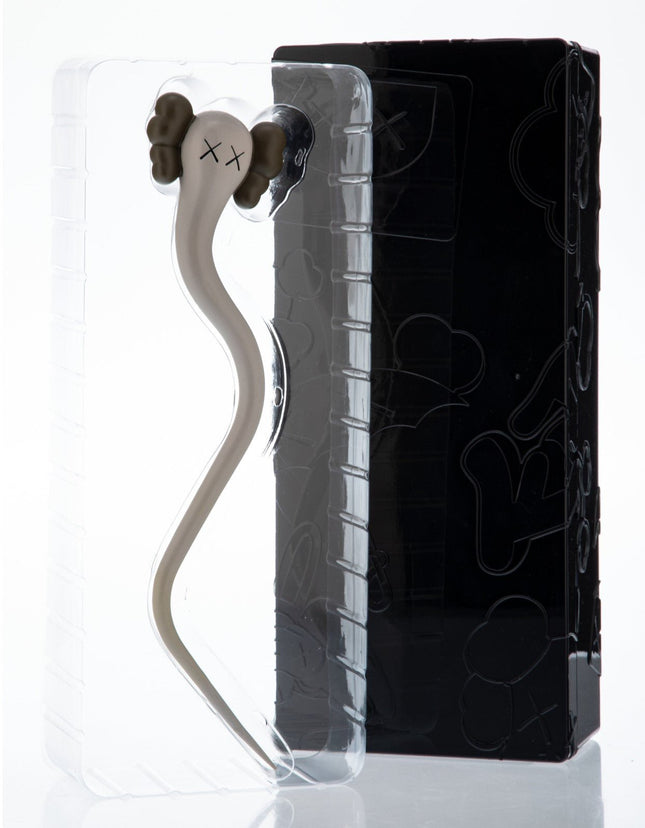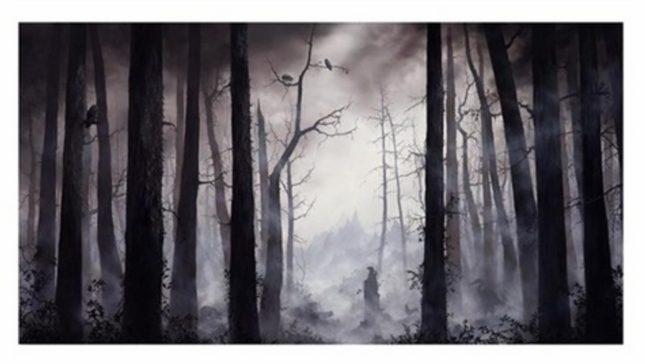
Gray/Grey
-

Kaws- Brian Donnelly Bendy- Grey Fine Art Toy by Kaws- Brian Donnelly
Bendy- Grey Rare Painted Vinyl Art Toy Sculpture Collectible Artwork by Pop Modern Artist Kaws- Brian Donnelly. 2003 Limited Edition Size 13-3/4 x 3 x 1-1/2 inches Displayed With Box In Fantastic Condition Stamped. KAWS (b. 1974) Bendy (Grey), 2003 Painted cast vinyl 13-3/4 x 3 x 1-1/2 inches (34.9 x 7.6 x 3.8 cm) Stamped to the reverse Produced by Medicom Toy, Tokyo KAWS' Bendy: A Fusion of Street Pop Art and Modern Sculpture KAWS, the artistic moniker of Brian Donnelly, has become a juggernaut in the world of Street Pop Art and Graffiti Artwork, known for his ability to navigate the confluence of commercial and fine art. "Bendy" is a testament to his creative prowess, a piece that exudes the essence of his style while embodying street art's playful yet subversive spirit. Released in 2003, "Bendy (Grey)" is a rare painted vinyl art toy sculpture that illustrates the artist's flirtation with form and space. The sculpture measures an impressive 13-3/4 x 3 x 1-1/2 inches and is presented in a state described as a fantastic condition, signaling the care collectors have taken to preserve this work of art. The grey rendition of "Bendy" is particularly notable for its understated elegance and the way it captures light and shadow, accentuating the fluidity and dynamism of the form. This piece is stamped to the reverse, a signature of authenticity and a hallmark of the collaborative efforts between KAWS and Medicom Toy, Tokyo. Medicom Toys is revered for its dedication to quality and its role in elevating the status of designer toys as a severe form of contemporary art. The Collectibility and Cultural Impact of KAWS' Bendy "Bendy" occupies a unique position in the pantheon of KAWS' creations, representing an early foray into three-dimensional art that would define much of his later work. The collectibility of "Bendy" is derived from its limited-edition status and its place within the narrative of KAWS' evolution as an artist. Collectors and enthusiasts of Street Pop Art admire "Bendy" for its rarity and innovation in the art toy genre, a segment that KAWS has been instrumental in popularizing. KAWS' "Bendy" serves as a cultural artifact that bridges the gap between the insurgent beginnings of graffiti and the polished galleries of modern art. It is a manifestation of the artist's journey, encapsulating the raw energy of street art and the refined finish of contemporary sculpture. Much like the rest of KAWS' work, this piece is not simply a collectible object; it is a narrative in vinyl, a story of progression from the streets to the echelons of high art. Exploring the Artistic Language of KAWS Through Bendy The artistic language of KAWS employs a visual lexicon familiar to many, featuring motifs and figures that echo characters from pop culture. Yet, through works like "Bendy," KAWS subverts these standard forms, infusing them with a distinct sense of emotion and humanity. The grey color of this particular edition of "Bendy" echoes the urban landscape, a nod to the concrete canvases of street artists. It's a color that also conveys a sense of the industrial, mass-produced, and ubiquitous themes often explored in Street Pop Art and Graffiti Artwork. In the art toy "Bendy," there is a playful defiance, a bending of the rules that govern traditional sculpture. This piece showcases KAWS' inclination to push boundaries, to stretch and contort the familiar into something new and unexpected. This willingness to experiment, to blend the irreverent with the sophisticated, has endeared KAWS to both the street art community and the fine art world. "Bendy" is not just an object of desire for collectors; it is a pivotal chapter in the ongoing story of street pop art, a testament to the transformative power of KAWS's artistic vision.
$2,000.00
-

Brian Mashburn Walking Shadows AP Giclee Print by Brian Mashburn
Walking Shadows AP Artist Proof Giclee Print by Brian Mashburn Artwork Limited Edition Print on Fine Art Paper Graffiti Pop Street Artist. AP Artist Proof 2018 Signed & Marked AP Limited Edition Artwork Size 24x13.75 Walking Shadows AP: A Giclee Print Elevating Street Pop Art & Graffiti Walking Shadows AP, an Artist Proof giclee print by Brian Mashburn represents a synthesis of street art sensibilities and fine art precision. As an Artist Proof from 2018, it holds a special place in Mashburn's collection, offering insight into his creative process. The piece measures 24x13.75 inches, allowing for an immersive viewing experience. Signed and marked by the artist, this limited edition print is a tangible connection to the artist's vision and a coveted item for those who appreciate the subtle infusion of graffiti art in pop culture contexts. Signature and Significance in Street Pop Art & Graffiti Artwork The signature on a piece like Walking Shadows AP is more than a simple autograph; it is a seal of authenticity and a symbol of the artist's intimate connection with his work. In the context of Street Pop Art and graffiti Artwork, such a signature elevates the print from a mere copy to an artifact of cultural significance. The AP designation further underscores its rarity, as Artist Proofs are typically reserved for the artist's personal use or select collectors. Artistic Elements of Walking Shadows AP The artwork's title, Walking Shadows, alludes to the transient nature of light and life, recurrent themes in Mashburn's oeuvre. The giclee print medium is particularly suited to capturing the nuanced gradations of shade and tone that characterize Mashburn's landscapes, filled with mist and the skeletal remains of trees. The dimensions of this particular print are chosen to enhance the ethereal quality of the depicted scene, drawing the viewer into a contemplation of the fleeting moments it captures. The Interplay of Medium and Message In Walking Shadows AP, the choice of fine art paper as the medium for the giclee print brings an additional layer of texture and depth to the artwork. This choice reflects a deliberate move by Mashburn to bridge the often perceived divide between street art's raw energy and the refined techniques of fine art printmaking. The result is a piece that resonates with the authenticity of graffiti art while maintaining the delicacy of pop art aesthetics. Impact and Legacy of Brian Mashburn's Prints The impact of Brian Mashburn's work in Street Pop Art and graffiti Artwork is significant, with Walking Shadows AP serving as a prime example of his influence. The print's release as a limited edition makes it a valuable collector's item and ensures that each piece retains a sense of exclusivity. As street art continues to gain recognition in the art world, Mashburn's prints stand as milestones that capture the evolving narrative of this dynamic art form. Cultural Resonance of Walking Shadows AP The cultural resonance of a piece like Walking Shadows AP cannot be overstated. In a world where the distinction between high art and street art is increasingly blurred, Mashburn's work serves as a testament to the potential of graffiti art to convey profound themes and to hold its own in the gallery space. This Artist Proof giclee print, through its evocative imagery and impeccable execution, encapsulates the spirit of Street Pop Art and graffiti Artwork and continues to inspire dialogue and admiration among art enthusiasts and critics alike.
$462.00



